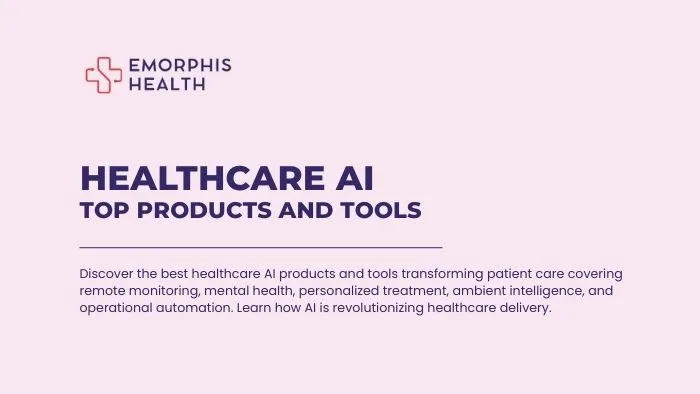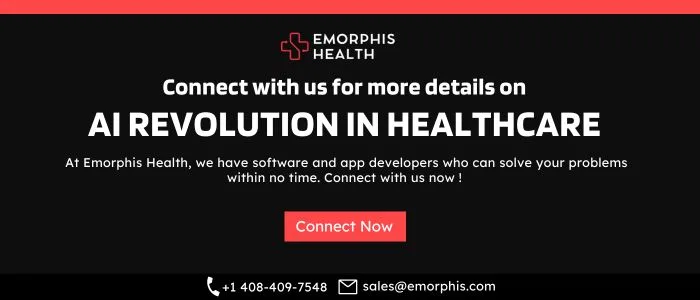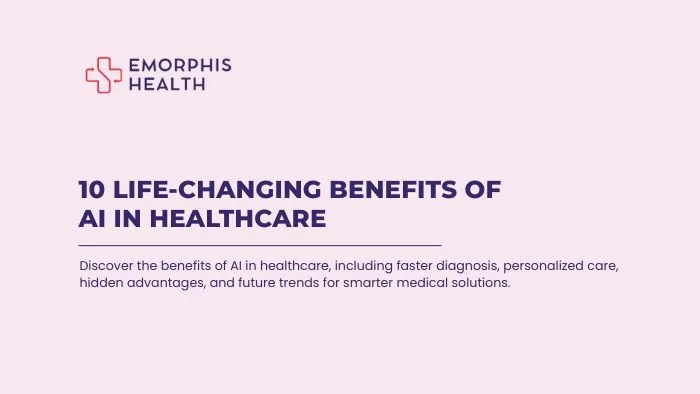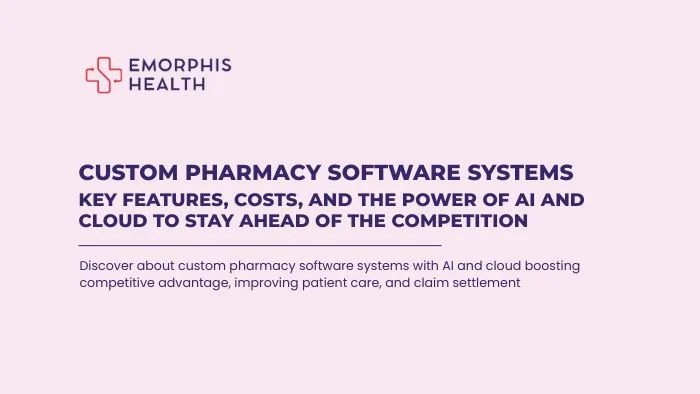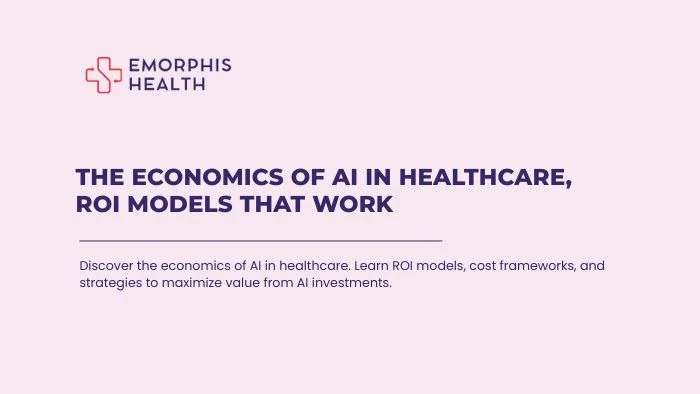Overview
See Contents
The rapid advancement of healthcare AI is transforming the medical landscape by enhancing diagnostics, personalizing treatment, optimizing workflows, and empowering patients. Today, a wide array of AI-powered tools is revolutionizing how care is delivered, monitored, and managed.
In this article, we delve into the most impactful healthcare AI products categorized by their specific applications and functionalities.
1. Diagnostic AI Tools
1.1 Aidoc
Aidoc is a radiology-focused healthcare AI platform designed to assist radiologists in analyzing medical images with exceptional accuracy and speed. It uses deep learning algorithms trained on thousands of annotated imaging studies to detect life-threatening conditions such as brain hemorrhages, pulmonary embolisms, and cervical spine fractures.
Key features of Aidoc:
- Real-time alerting system for critical cases.
- Seamless integration with PACS and radiology workflow.
- FDA-cleared for multiple use cases across different body regions.
- Reduces turnaround times and improves prioritization of cases.
Aidoc’s healthcare AI model continuously learns from new data, enhancing its diagnostic precision over time. Hospitals and imaging centers adopting Aidoc have reported improved workflow efficiency and better clinical outcomes, particularly in emergency and stroke care scenarios. With the increasing volume of imaging exams, Aidoc ensures radiologists do not miss critical findings due to fatigue or workload.
1.2 Zebra Medical Vision
Zebra Medical Vision is another pioneering healthcare AI solution in medical imaging, offering a suite of algorithms that analyze radiological scans to detect a variety of conditions, including osteoporosis, breast cancer, fatty liver, and coronary artery disease. Zebra’s platform scans millions of medical images to provide accurate risk assessments and early detection alerts.
Key capabilities of Zebra Medical Vision include:
- AI-powered analytics for over 50 diseases.
- Early warning alerts to prevent complications.
- Integration with hospital systems and workflows.
- Extensive regulatory approvals including CE and FDA clearances.
Zebra’s healthcare AI products not only aid in diagnosis but also in population health management by flagging patients at risk before symptoms occur. Its AI tools are widely adopted by health systems worldwide, contributing to improved preventive care and reduced healthcare costs. By supporting radiologists with second-opinion insights, Zebra ensures a higher standard of diagnostic confidence and accuracy.
1.3 PathAI
PathAI leverages healthcare AI to support pathologists in the diagnosis of diseases like cancer through the analysis of digitized pathology slides. Its machine learning models are trained to identify patterns in tissue samples, offering a second layer of review to reduce diagnostic errors.
Highlights of PathAI’s platform:
- Advanced slide interpretation using AI.
- Reduces variability between pathologist diagnoses.
- Optimized for high-throughput pathology labs.
- Applicable across oncology, liver disease, and infectious diseases.
PathAI’s solution improves both speed and accuracy, ensuring timely and reliable diagnoses, which are critical in oncology. The platform is used in both research and clinical settings, and it also collaborates with pharmaceutical companies for biomarker discovery and clinical trials. With increasing digitization of pathology, PathAI represents the future of pathology diagnostics powered by healthcare AI.
1.4 IDx-DR
IDx-DR is the first FDA-approved autonomous AI diagnostic system for detecting diabetic retinopathy. This healthcare AI tool performs eye exams without the need for a specialist to interpret results. A non-specialist operator captures images of the retina, and the AI instantly analyzes them for signs of diabetic retinopathy.
Core functionalities include:
- Fully autonomous diagnostic AI.
- Quick analysis within minutes.
- Helps prevent vision loss through early detection.
- Designed for use in primary care settings.
IDx-DR democratizes access to eye care by enabling early detection of diabetic eye disease, particularly in underserved areas where ophthalmologists are scarce. It reduces the burden on eye care specialists and makes regular screenings more accessible. This tool exemplifies how healthcare AI can bring specialist-level diagnostics into everyday care environments.


2. Clinical Decision Support Systems (CDSS)
2.1 IBM Watson Health
IBM Watson Health employs healthcare AI to analyze vast volumes of medical literature, clinical data, and patient records to provide decision support to physicians. It was initially launched with a focus on oncology but has since expanded to other domains such as genomics, cardiology, and clinical trial matching.
Key strengths of Watson Health:
- AI-driven treatment recommendations based on evidence.
- Helps identify clinical trial eligibility.
- Natural language processing for unstructured data.
- Scalable solution for hospitals and research centers.
Despite facing criticism over some early implementation hurdles, IBM Watson Health continues to evolve. Its healthcare AI capabilities are especially valuable in precision medicine, where matching the right treatment to the right patient is critical. By synthesizing insights from millions of publications and real-world evidence, Watson Health acts as a powerful co-pilot for clinicians.
2.2 Tempus
Tempus integrates genomic sequencing with clinical data to deliver personalized treatment recommendations. Its healthcare AI platform supports oncologists by analyzing both molecular and clinical data to identify actionable insights for cancer therapy.
Features include:
- Comprehensive molecular profiling.
- Clinical data structuring and normalization.
- AI-driven clinical trial matching.
- Integration with electronic health records.
Tempus has created one of the world’s largest libraries of clinical and molecular data. Its healthcare AI tools are widely used in cancer care to support decision-making and research. Tempus empowers clinicians with real-time insights, ensuring treatments are aligned with each patient’s unique genetic makeup.
2.3 Clew
Clew is a predictive analytics platform that uses healthcare AI to monitor critically ill patients, particularly in ICUs. It continuously processes physiological and EMR data to predict and alert providers of potential patient deterioration.
Main benefits of Clew include:
- Predictive alerts for sepsis, cardiac arrest, and more.
- Real-time patient monitoring.
- AI models tailored for ICU settings.
- Improves resource allocation and patient outcomes.
Clew is a leading example of healthcare AI being used to enhance situational awareness in high-stakes environments. It helps reduce mortality and improve efficiency by proactively identifying at-risk patients before critical events occur.
3. Drug Discovery & Development
3.1 Atomwise
Atomwise is transforming drug discovery using healthcare AI algorithms that simulate molecular interactions to identify potential drug candidates faster than traditional methods. Its proprietary AtomNet platform analyzes millions of compounds to determine which are most likely to bind to a given protein target.
Key functionalities of Atomwise:
- Deep learning-based molecular docking.
- Rapid screening of large chemical libraries.
- Collaborative partnerships with pharma and academic institutions.
- Supports orphan drug and rare disease research.
By significantly reducing the time and cost involved in early-stage drug development, Atomwise is addressing critical gaps in pharmaceutical innovation. Its AI models help identify novel compounds that may not have been obvious through conventional screening. The use of healthcare AI in Atomwise exemplifies how AI can fast-track life-saving therapies to the market.
3.2 Insilico Medicine
Insilico Medicine integrates healthcare AI with biological data to uncover new drug targets and design novel molecules. The company employs generative adversarial networks (GANs) and reinforcement learning to design drugs that are not only effective but also safe and synthesizable.
Key highlights of Insilico Medicine:
- End-to-end AI platform for drug discovery.
- Target identification, molecule generation, and preclinical validation.
- AI-designed drug candidates in trials.
- Partnerships with global pharmaceutical companies.
Insilico’s AI engine, PandaOmics, and drug design platform, Chemistry42, are central to its innovation. By combining vast biological databases with cutting-edge machine learning, Insilico reduces the cost and time of R&D. This marks a significant leap in how healthcare AI can contribute to curing diseases previously considered untreatable.
3.3 BenevolentAI
BenevolentAI uses healthcare AI to mine scientific literature, clinical trial data, and patient records to uncover hidden relationships between diseases, genes, and drugs. Its AI platform helps identify existing drugs that could be repurposed and accelerates the development of new ones.
Core strengths of BenevolentAI include:
- Knowledge graph-based drug target identification.
- Hypothesis generation using NLP and ML.
- Strong focus on neurodegenerative and autoimmune diseases.
- Collaboration with research and pharma entities.
BenevolentAI’s platform acts as a digital research assistant, drawing connections across disciplines and uncovering novel therapeutic pathways. By leveraging the power of healthcare AI, the company is driving discoveries that would have otherwise taken years to surface using traditional approaches.
4. Virtual Assistants
4.1 Nuance DAX (Dragon Ambient eXperience)
Nuance DAX is a conversational healthcare AI tool that automatically transcribes patient-physician interactions into clinical notes in real time. It uses ambient AI and natural language processing (NLP) to reduce the administrative burden on healthcare providers.
Notable features of Nuance DAX:
- Captures multi-speaker conversations.
- Generates structured medical documentation.
- Seamless EHR integration.
- Enhances patient experience and reduces physician burnout.
With Nuance DAX, clinicians can focus more on their patients rather than on screens and keyboards. By automating medical documentation, it significantly reduces charting time and increases the accuracy of records. This healthcare AI tool is widely adopted in primary care, specialty clinics, and hospitals, contributing to better workflow and improved patient-provider interactions.
4.2 Suki AI
Suki AI is a voice-enabled digital assistant designed to help physicians create clinical documentation quickly and efficiently. Its healthcare AI system understands medical terminology and adapts to individual physician preferences.
Key benefits of Suki AI include:
- AI-powered voice recognition.
- Works across multiple specialties.
- Customizable command-based input.
- Integrates with leading EHR systems.
Suki helps clinicians cut documentation time by up to 76%, allowing them to spend more time with patients. The system continually learns from user feedback, improving its efficiency and personalization over time. As a result, Suki is helping drive adoption of healthcare AI in day-to-day clinical practice.
4.5 Amazon HealthLake
Amazon HealthLake is a HIPAA-eligible service that uses machine learning to extract and structure health data from various formats, making it easier to analyze and share. This healthcare AI tool is especially useful in research, care coordination, and population health management.
Features include:
- Unified health data lake.
- NLP-powered information extraction.
- Longitudinal patient records.
- Real-time querying and analytics.
Amazon HealthLake provides the data backbone for many healthcare AI solutions, enabling a 360-degree view of patients. It supports advanced analytics, AI training, and interoperability, making it essential for organizations moving toward value-based care.


5. Remote Monitoring
5.1 Biofourmis
Biofourmis is a leader in the remote monitoring space, offering an AI-driven platform that continuously tracks patient health through wearable sensors and mobile devices. Its healthcare AI models analyze physiological data in real-time to detect early signs of deterioration, enabling timely interventions.
Core features:
- Continuous monitoring via wearable biosensors.
- Predictive analytics for early detection of issues.
- Customizable dashboards for clinicians.
- Supports post-acute care, chronic conditions, and hospital-at-home programs.
Biofourmis has demonstrated significant reductions in hospital readmissions and emergency visits by enabling proactive care. The platform’s healthcare AI engine not only alerts clinicians but also suggests appropriate actions, making it a comprehensive remote care solution.
5.2 AliveCor KardiaMobile
AliveCor’s KardiaMobile is a portable ECG device powered by healthcare AI that allows patients to record their heart activity on-the-go. The device offers real-time analysis of heart rhythms, making it an essential tool for individuals with heart conditions.
Key capabilities of KardiaMobile:
- Portable, personal ECG device.
- Real-time heart rhythm analysis powered by AI.
- Detects abnormal heart rhythms, including atrial fibrillation.
- Easy-to-use interface for patients and clinicians.
With KardiaMobile, patients can easily monitor their heart health from home, while clinicians receive timely data to assist in diagnosis. This healthcare AI tool enables more accessible heart disease management.
5.3 iRhythm Zio
The iRhythm Zio patch offers long-term cardiac monitoring with advanced healthcare AI analysis of ECG data. This device provides actionable insights on arrhythmias, enabling healthcare providers to make more accurate diagnoses.
Key features of iRhythm Zio:
- Continuous, 14-day heart monitoring.
- AI-powered ECG data analysis.
- Identifies arrhythmias and abnormal heart rhythms.
- Non-invasive, comfortable for long-term wear.
iRhythm Zio is particularly useful in detecting intermittent arrhythmias that may not be present during a standard ECG, providing both patients and healthcare providers with deeper insights into heart health.
6. Operational AI
6.1 Qventus
Qventus applies healthcare AI to optimize hospital operations, improving areas like patient flow, surgical scheduling, and emergency department throughput. By automating routine decisions and using real-time data, Qventus enhances operational efficiency.
Key benefits of Qventus:
- AI-driven workflow optimization for hospitals.
- Real-time decision-making support for clinicians.
- Optimizes patient flow and bed management.
- Scalable across hospitals and healthcare facilities.
Qventus has successfully improved operational performance, reducing wait times and ensuring better resource allocation in hospitals. Its healthcare AI capabilities allow healthcare systems to be more responsive, efficient, and patient-centered.
6.2 Olive AI
Olive AI automates back-office functions in healthcare organizations using healthcare AI, allowing for streamlined workflows in areas like prior authorizations, billing, and claims processing.
Key functionalities of Olive AI:
- Automation of administrative tasks, including prior authorizations.
- AI-driven revenue cycle management.
- Seamless integration with EHR and billing systems.
- Provides real-time data for decision-making.
By reducing administrative overhead and streamlining operations, Olive AI frees up healthcare providers to focus more on patient care while improving financial and operational outcomes.
6.3 GE Healthcare Edison
GE Healthcare’s Edison platform uses healthcare AI to enhance operational workflows in healthcare settings. Edison integrates AI-driven decision support tools and predictive analytics to optimize healthcare operations.
Core features of Edison:
- AI-driven real-time data analysis and decision support.
- Predictive insights for patient management.
- Improves hospital resource allocation.
- Scalable across a wide range of healthcare facilities.
Edison’s healthcare AI tools help healthcare providers make data-driven decisions, ensuring the right resources are available for patient care, while optimizing hospital operations and reducing costs.
7. Mental Health
7.1 Wysa
Wysa is an AI-powered chatbot that uses healthcare AI to deliver cognitive behavioral therapy (CBT), mindfulness, and emotional support. It provides a confidential space for individuals to discuss their mental health and receive guidance.
Key features of Wysa:
- 24/7 access to therapeutic support via AI.
- Uses evidence-based techniques like CBT and mindfulness.
- Offers support for stress, anxiety, and depression.
- Escalates to human intervention when needed.
Wysa’s healthcare AI empowers users to manage their mental wellness on their own terms, making mental health care more accessible and stigma-free for millions of people worldwide.
7.2 Woebot
Woebot is an AI-driven mental health assistant that uses healthcare AI to provide support for individuals dealing with stress, anxiety, and depression. It engages users in therapeutic conversations based on cognitive-behavioral principles.
Key functionalities of Woebot:
- Provides 24/7 conversational support.
- AI-driven, personalized responses based on user input.
- Focuses on stress management and emotional wellness.
- Uses evidence-based mental health techniques.
Woebot offers a practical and private solution to those seeking mental health support, allowing users to track and manage their emotional health with the help of healthcare AI.
7.3 Tess
Tess is an AI-powered psychological tool that offers real-time emotional support through text-based interactions. Powered by healthcare AI, Tess tracks mood patterns and provides personalized guidance based on the user’s emotional state.
Core capabilities of Tess:
- AI-powered emotional support in real time.
- Tracks mood and provides tailored advice.
- Monitors mental health progress over time.
- Uses evidence-based techniques for therapy and emotional wellness.
Tess combines advanced healthcare AI with real-time emotional intelligence to support individuals through a personalized mental health journey.
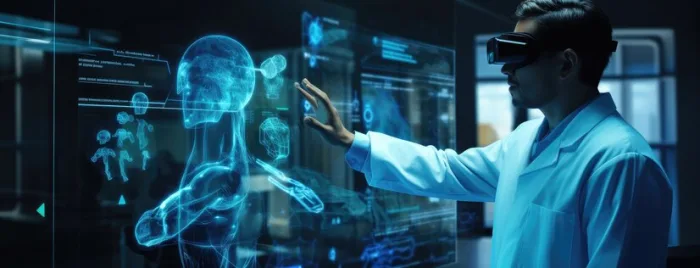

8. Personalized Care
8.1 Jvion
Jvion’s healthcare AI platform offers personalized care by predicting which patients are at risk of negative outcomes and recommending personalized interventions tailored to their needs. This approach improves outcomes while reducing unnecessary treatments.
Key features of Jvion:
- AI-powered patient risk prediction.
- Personalizes care recommendations based on data.
- Helps healthcare providers identify at-risk patients early.
- Improves outcomes for oncology, chronic care, and more.
Jvion’s healthcare AI ensures that interventions are highly targeted, leading to better patient care and more efficient resource use.
8.2 Tempus
Tempus combines healthcare AI with genomic sequencing to deliver personalized cancer care. The platform analyzes genetic and molecular data to recommend treatments tailored to each patient’s unique profile.
Key functionalities of Tempus:
- Integrates clinical data with genomic sequencing.
- AI-driven insights for personalized cancer treatment.
- Helps oncologists make data-informed decisions.
- Real-time support for clinical trials and research.
Tempus provides oncologists with powerful tools to make more informed, personalized treatment decisions for cancer patients, demonstrating the capabilities of healthcare AI in precision medicine.
8.3 Foundation Medicine
Foundation Medicine integrates healthcare AI to analyze genomic data and provide insights into personalized cancer treatment options, ensuring treatments target the unique characteristics of each patient’s cancer.
Core strengths of Foundation Medicine:
- Comprehensive genomic profiling for cancer patients.
- AI-powered analysis of molecular data.
- Identifies targeted therapies based on genetic mutations.
- Works alongside oncologists to optimize treatment plans.
Foundation Medicine’s healthcare AI tools enable precision medicine, ensuring that each patient receives the most effective and personalized cancer care.
9. Ambient Intelligence
9.1 Care.ai
Care.ai uses healthcare AI to turn healthcare facilities into smart environments. By employing a network of sensors, it monitors patient activities, detects falls, and tracks room occupancy, providing real-time alerts to improve patient safety.
Key capabilities of Care.ai:
- Real-time patient activity monitoring via smart sensors.
- Fall detection and room occupancy tracking.
- AI-powered analytics for real-time safety alerts.
- Enhances the patient experience in healthcare settings.
Care.ai’s use of healthcare AI helps create safer, more efficient care environments by seamlessly integrating intelligent sensors into everyday healthcare settings.
9.2 NuraLogix
NuraLogix’s AI-powered facial recognition technology monitors patients’ health by analyzing their facial features. Using healthcare AI, it tracks changes in health conditions through non-invasive, continuous monitoring.
Features of NuraLogix:
- AI-driven facial recognition for health monitoring.
- Non-invasive and continuous monitoring.
- Provides insights into patient health through facial analysis.
- Easy integration with healthcare systems for real-time alerts.
NuraLogix exemplifies the power of healthcare AI in providing contactless, ongoing health monitoring, enabling early detection of potential health issues.
9.3 Sense.ly
Sense.ly uses healthcare AI and ambient intelligence to enhance patient engagement. Its virtual assistant, Molly, interacts with patients to collect health data and provide personalized care recommendations remotely.
Key features of Sense.ly:
- Virtual assistant (Molly) powered by healthcare AI.
- Tracks patient health and provides tailored advice.
- Seamless communication for remote monitoring and consultations.
- Improves patient compliance and engagement.
Sense.ly’s ambient intelligence solutions, combined with healthcare AI, help healthcare providers manage patients remotely while ensuring personalized care.


10. Administrative Automation
10.1 Olive AI
Olive AI automates healthcare administrative tasks, such as prior authorizations, claims processing, and revenue cycle management, by using healthcare AI to streamline workflows and reduce administrative burden.
Core features of Olive AI:
- Automation of administrative workflows.
- AI-driven revenue cycle management.
- Real-time data analysis for informed decision-making.
- Reduces manual processes and increases operational efficiency.
Olive AI leverages healthcare AI to cut down on repetitive tasks and optimize back-office operations, enabling healthcare providers to focus more on patient care.
10.2 Truata
Truata offers AI-powered data analytics solutions for healthcare, ensuring privacy compliance while automating data processes. By using healthcare AI, Truata allows healthcare organizations to extract valuable insights from data without compromising patient privacy.
Key functionalities of Truata:
- AI-driven data privacy compliance solutions.
- Automation of data processing and analytics.
- Facilitates data insights while ensuring regulatory compliance.
- Focuses on maintaining patient privacy.
Truata’s healthcare AI solutions make it easier for healthcare providers to comply with privacy regulations while still unlocking the value of their data.
10.3 RPA by UiPath
UiPath provides robotic process automation (RPA) solutions that use healthcare AI to automate repetitive administrative tasks, such as data entry, billing, and documentation, improving workflow efficiency and reducing human error.
Core features of UiPath:
- Automates back-office tasks using healthcare AI.
- Reduces operational inefficiencies and human errors.
- Scalable across large healthcare organizations.
- Integration with existing IT systems for seamless workflow.
UiPath’s RPA solutions, powered by healthcare AI, streamline administrative workflows, enabling healthcare organizations to operate more efficiently.
Further read details on Responsible AI in Healthcare.

